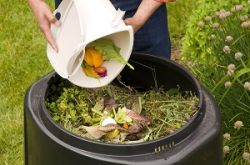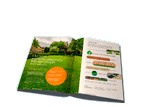The Uses and Benefits of Compost in Agriculture
Posted on 19/06/2020

Making and Using Compost
The environment’s health and the prevention of global warming continue to be pressing issues, and there is only one clear cut way to prevent the production of harmful methane: compost.
According to the Environmental Defense Fund, the short-term impact of methane is over eighty-four times more destructive than carbon dioxide gas. It is for this reason the compost has become a vital means of garbage disposal. Properly composted garbage produces no methane gas. Additionally, landfill use is reduced by composting, and landfills are some of the most environmentally damaging garbage disposal structures. As a side benefit, composted waste actually helps the environment grow by providing needed nutrients to the land. What’s more is that composting is super simple. All anyone needs is a designated area to heap the proper waste. Of course professionally made compost bins will accelerate the process, but they are ultimately unnecessary.
Unfortunately, there are a variety of pitfalls that can complicate the process, making uninformed composting ineffective or impractical. The first step to successful composting is knowing what to put into the compost bin. Anything alive or recently alive can be thrown into the bin. This grouping includes everything from latex products to used paper. Dry paper products are perfect as they absorb moisture, break down quickly, and produce little to no odor. The part that many now-disgruntled composters forget is what not to put in. Even though meat technically can be composted, items like meat will rot. As a result wildlife could be attracted or, at the very least, the bin will be left with an unsavory odor. Items to avoid composting include diseased plants, pet waste, and perennial plants like dandelions. These hazards will form unwanted growths or smells. Additionally, non-degradable products, like glass, metal, and plastic, should never be put into the compost bin, for they will simply not break down into anything of use.
The next essential step is deciding the location of the compost bin. This choice will have a massive impact on the rate of decomposition. Ideally the bin should be on level ground, allowing excess water to drain away easily. With the correct position, the bin should naturally attract nearby worms, which will speed up the composting process. If no worms are nearby it is recommended to purchase a set of Tiger Worms as they are the most efficient worms with the biggest appetite for disposed compost.
Finally comes the intricacy of keeping compost composition optimal. Compost bins should have a good mix of ‘wet’ and ‘dry’ material. Wet materials include greens and other food products. Dry materials consist of paper-based products like egg cartons as well as leaves. At the end of the entire process, bins should be left with a dark brown to black soil layer. This soil is perfect for nurturing flowerbeds while suppressing weeds. This result has a double effect in saving the environment, as users will find they need less fertilizer and pesticide. Follow this guide and compost will be an environmentally-friendly breeze.






 Certified and experienced landscapers
Certified and experienced landscapers



 Get a Quote
Get a Quote